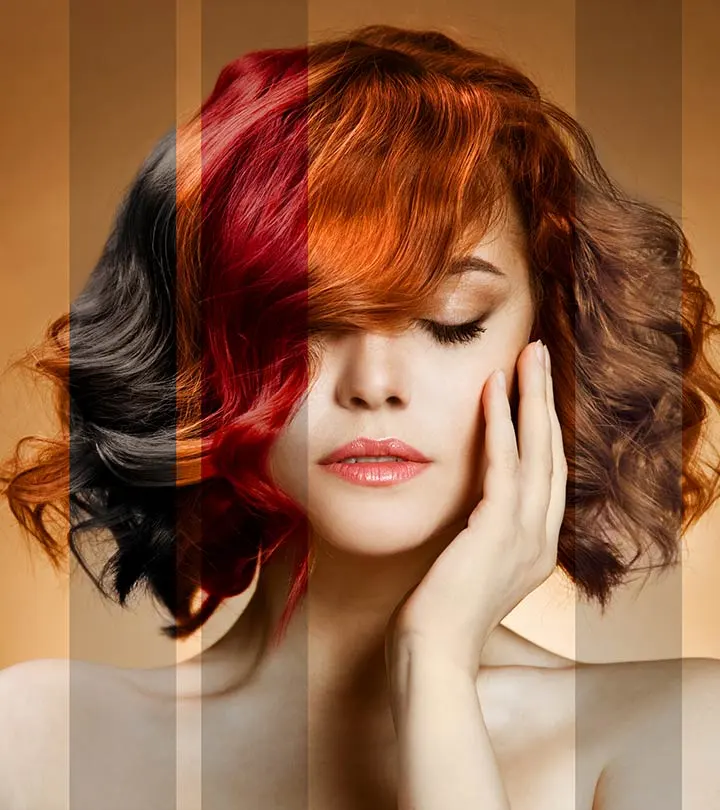Introduction:
Hair coloring has become an art form, allowing individuals to express their personality and style through vibrant hues and subtle shades. Whether you’re looking to cover gray, experiment with a bold new color, or simply enhance your natural shade, this comprehensive guide explores various hair coloring techniques, provides expert tips, and delves into the latest trends in the world of hair color.
Understanding Hair Coloring Basics
Choosing the Right Color:
Before embarking on a hair coloring journey, it’s crucial to select a shade that complements your skin tone, eye color, and personal style. Warm undertones pair well with reds and golds, while cool undertones work harmoniously with ashy tones and blues.
Hair Color Categories:
Hair colors can be broadly categorized into permanent, semi-permanent, and temporary options. Permanent color provides long-lasting results, while semi-permanent and temporary colors offer flexibility for those who want to experiment without a long-term commitment.
Patch Testing:
To avoid allergic reactions or unexpected color results, always perform a patch test before applying any hair dye. Apply a small amount of the product to a discreet area of your skin and wait 24-48 hours to check for any adverse reactions.
Hair Coloring Techniques
Single-Process Color:
Single-process color involves applying a single shade to the entire head. It’s a straightforward method for covering gray hair or achieving a uniform color.
Highlights and Lowlights:
Adding dimension to your hair is achieved through highlights and lowlights. Highlights lighten sections of hair, while lowlights add depth and richness. Balayage and foiling are popular techniques for achieving these effects.
Ombre and Sombre:
Ombre and sombre techniques involve a gradual transition from darker to lighter shades. Ombre creates a more dramatic contrast, while sombre results in a softer, subtler effect.
Color Blocking:
Color blocking involves strategically placing blocks of color throughout the hair. This technique allows for creative expression and is popular for those seeking a bold, statement look.
DIY vs. Professional Coloring
DIY Hair Coloring:
Home hair coloring kits are widely available and can be a cost-effective option for those comfortable with the process. However, it’s essential to follow instructions carefully to achieve desired results and minimize the risk of uneven coloring.
Professional Hair Coloring:
For intricate techniques or major transformations, seeking the expertise of a professional colorist is advisable. Professional colorists have the knowledge and experience to create customized looks while ensuring the health and integrity of your hair.
Maintaining and Caring for Colored Hair
Color-Safe Shampoos and Conditioners:
To prolong the vibrancy of your hair color, use sulfate-free, color-safe shampoos and conditioners. These products help prevent fading and maintain the health of color-treated hair.
Regular Touch-Ups:
Depending on the type of hair color and growth rate, regular touch-ups may be necessary to maintain a polished look. Schedule appointments or set reminders for at-home touch-ups to keep your color fresh.
Deep Conditioning Treatments:
Colored hair requires extra moisture to prevent dryness and damage. Incorporate deep conditioning treatments into your routine to nourish and revitalize your locks.
Trends in Hair Coloring
Pastel Colors:
Pastel hues, such as lavender, mint, and blush pink, continue to gain popularity among those seeking a whimsical and ethereal look.
Metallic and Jewel Tones:
Metallic shades and jewel tones, including rich emerald greens, sapphire blues, and deep purples, add a touch of glamour and sophistication to hair color trends.
Natural Balayage:
Balayage remains a timeless trend, with a shift towards more natural, sun-kissed looks. This technique offers a low-maintenance option that grows out gracefully.
Conclusion:
Hair coloring is a versatile and exciting way to express your individuality. Whether you opt for a subtle change or a bold transformation, understanding the basics, choosing the right technique, and embracing maintenance practices will ensure your colored locks look vibrant and healthy. Stay informed about the latest trends, and don’t be afraid to experiment with different hues to discover the perfect color that reflects your unique style.







